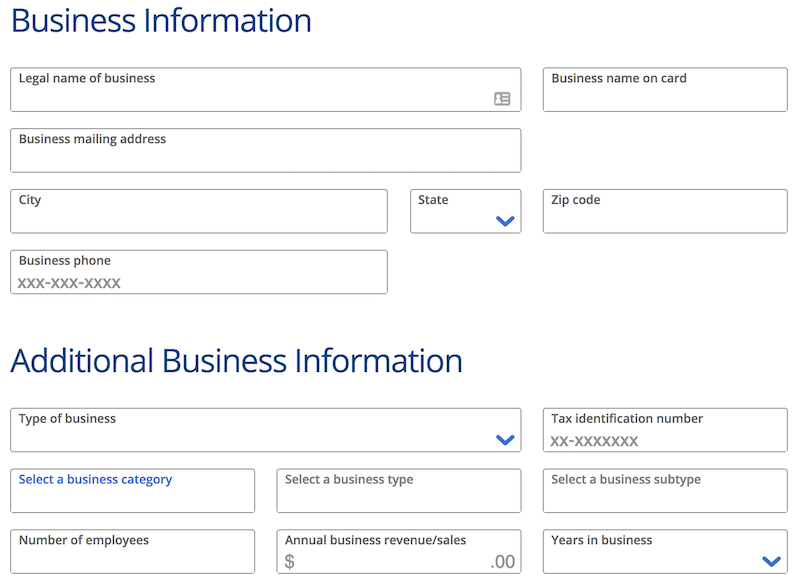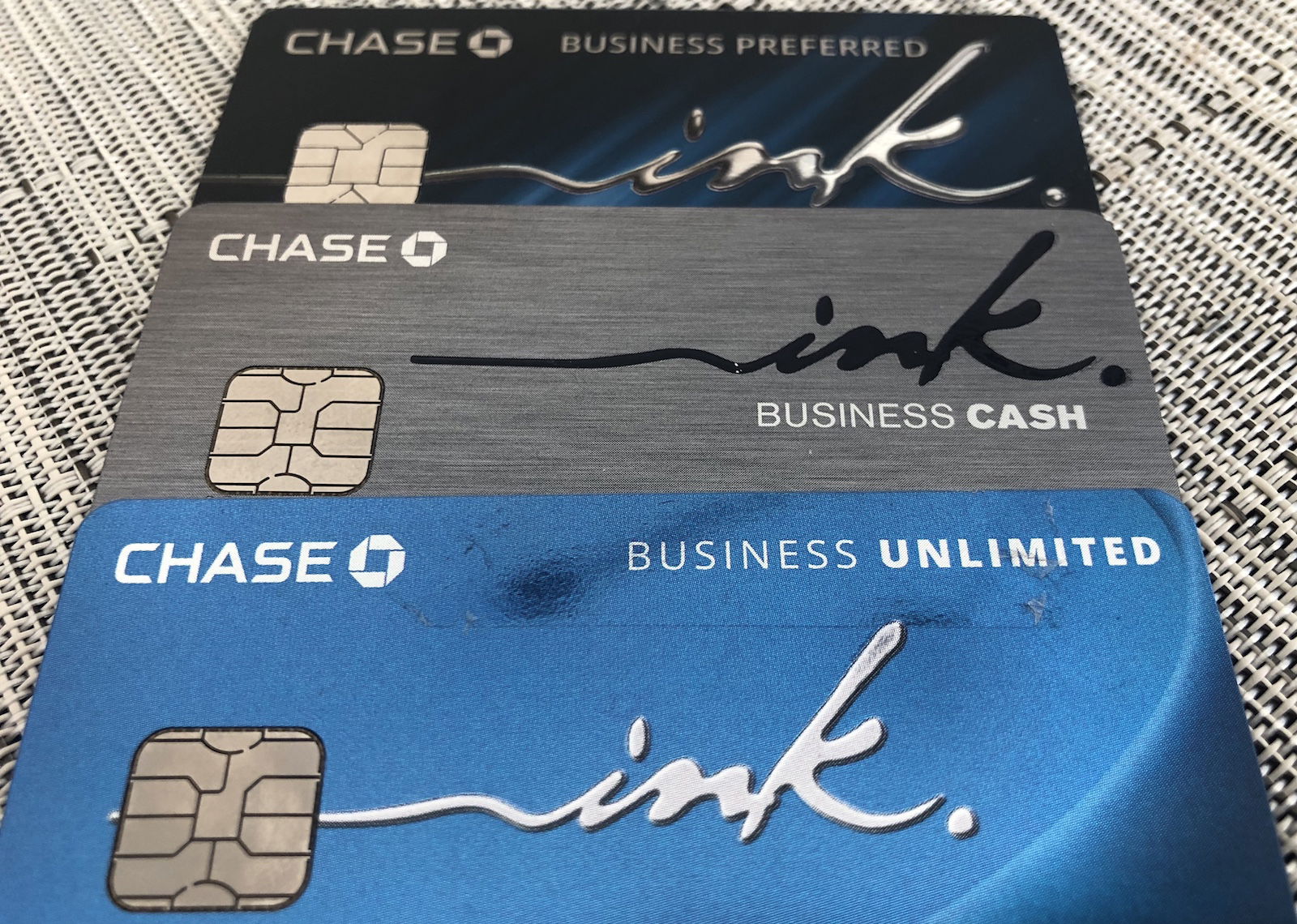
How To Apply For Chase Ink Business Credit Cards
Link: Wield now for the Ink Merchantry Preferred® Credit Card, Ink Merchantry Cash® Credit Card, or Ink Merchantry Unlimited® Credit Card
Chase has some of the all virtually weightier credit cards, in terms of the welcome bonuses, return on spending, and perks. In particular, the issuer has some of the weightier merchantry credit cards out there. These include the following:
- The Ink Merchantry Preferred® Credit Card (review) has the weightier welcome bonus of any credit card, and I’d oppose it’s the most well-rounded merchantry credit card
- The no yearly fee Ink Merchantry Cash® Credit Card (review) and Ink Merchantry Unlimited® Credit Card (review) have their best-ever welcome bonuses right now, and are often unconfined cards for maximizing points
- The New Merchantry Card! Ink Merchantry Premier℠ Credit Card (review) is Chase’s newest merchantry card, and is a compelling mazuma when card
I have three Chase Ink cards, so in this post I wanted to take a closer squint at who is eligible for these cards, and how you can go well-nigh getting tried for any or all of them.
Who is eligible for Chase merchantry credit cards?
Eligibility for a small merchantry credit vellum is easier than you might think. You don’t need to have a big company, and don’t plane need to be incorporated. Plane a small side merchantry with limited merchantry revenue makes you eligible for a merchantry credit card, plane if you’re just selling things on eBay, do some consulting on the side, have a rental property, or do freelancing, for example.
It goes without saying that you should unchangingly fill out credit vellum applications truthfully.

What are restrictions on applying for Chase merchantry credit cards?
Chase’s unstipulated restrictions on applying for cards are as follows:
- There’s no nonflexible limit on how many Chase credit cards you can be tried for, but rather there’s often a maximum value of credit Chase is willing to proffer you, in which specimen you may be asked to switch virtually your credit limits on some cards in order to facilitate an approval
- There are inconsistent data points as to how long you have to wait between applications; my recommendation is to wait 30 days between Chase merchantry vellum applications to be on the unscratched side
- Chase merchantry cards are subjected to the 5/24 rule, whereby you typically won’t be tried if you’ve opened five or increasingly new vellum finance in the past 24 months; I’ll talk increasingly well-nigh how that works below
- You can have (and earn the bonus) on each of the Chase Ink credit cards, so if you have the Ink Merchantry Preferred you’re eligible for the Ink Merchantry Cash, Ink Merchantry Unlimited, and/or Ink Merchantry Premier
How should you fill out a Chase merchantry credit vellum application?
Those who once have merchantry credit cards are probably familiar with the using process, but for those who aren’t, here’s what you need to know. It can be intimidating to wield for your first merchantry credit card, though plane if you’re a small merchantry or sole proprietorship, you should be eligible.
When applying for a Chase merchantry credit card, you’ll be asked the pursuit questions, in wing to the typical personal questions well-nigh your income, Social Security Number, etc.:
- Legal name of business
- Business mailing write & phone number
- Type of business
- Tax identification number
- Number of employees
- Annual merchantry revenue/sales
- Years in business

If you’re a sole proprietorship, how should you tideway this? First of all, and most importantly, wordplay everything truthfully. I think the snooping that a lot of people have is that they think they need an incorporated business, a separate office, etc., in order to be considered for a merchantry card. That’s not the case:
- You can use your name as the legal name of your business
- The merchantry mailing write and phone number can be the same as your personal write and phone number
- If you’re a sole proprietorship, you can select that as your type of business
- For the tax identification number, you can put your Social Security Number
- For number of employees, saying just one is perfectly fine
- For your yearly merchantry revenue, be honest well-nigh what it is
- For years in business, there’s no shame in saying that it’s new, that it has been one to two years, etc.
How nonflexible is to get tried for a Chase merchantry credit card?
When it comes to getting tried for merchantry credit cards, Chase certainly isn’t the easiest issuer. In unstipulated I find American Express merchantry cards to be easiest to be tried for. However, getting tried for Chase merchantry cards isn’t as tough as some people assume, at least if you have spanking-new credit.
In my wits instant approvals on Chase merchantry cards are fairly rare, so don’t be worried if the clearance doesn’t come through right away. You’ll usually get a pending visualization response, and then sooner (hopefully) an approval.

For example, I was sooner tried for the Ink Merchantry Preferred, Ink Merchantry Cash, and Ink Merchantry Unlimited, but in each specimen I didn’t receive an instant decision.
What are the weightier Chase merchantry credit cards?
There are three expressly worthwhile Chase merchantry cards to consider right now, and you’re eligible for all four of them, potentially (which ways that you can earn the bonus on a version of the vellum if you once have flipside version). Having these cards can really help you maximize your points from spending, given the complementary bonus categories these cards have. On top of that, the cards offer fantastic rental car coverage, which is a valuable perk.
First there’s the Ink Merchantry Preferred, which I consider to have the weightier welcome bonus of any merchantry credit vellum out there at the moment:
- Welcome bonus: 100,000 Ultimate Rewards points without spending $15,000 within three months
- Annual fee: $95
- Return on spend: 3x points on the first $150,000 of combined purchases per worth year-end year on travel, shipping purchases, internet, cable, phone services, and razzmatazz purchases made with social media sites and search engines (the vellum moreover offers a lamina phone protection benefit)
Then there’s the Ink Merchantry Cash, which has its best-ever welcome bonus at the moment:
- Welcome bonus: $900 mazuma when (which can potentially be converted into 90,000 Ultimate Rewards points) without spending $6,000 within three months
- Annual fee: $0
- Return on spend: 5x points on the first $25,000 of combined purchases per worth year-end year at office supply stores, and on internet, cable, and phone services, as well as 2x points on the first $25,000 of combined purchases per worth year-end year at restaurants and gas stations
Then there’s the Ink Merchantry Unlimited, which moreover has its best-ever welcome bonus at the moment:
- Welcome bonus: $900 mazuma when (which can potentially be converted into 90,000 Ultimate Rewards points) without spending $6,000 within three months
- Annual fee: $0
- Return on spend: 1.5x points on all purchases, making this one of the weightier cards for everyday spending
There are some other spanking-new co-branded Chase merchantry cards worth considering, including the following:
- Southwest® Rapid Rewards® Performance Merchantry Credit Card (review) — the vellum offers year-end bonus points, and an wondrous Southwest Wi-Fi benefit
- Southwest® Rapid Rewards® Premier Merchantry Credit Card (review) — the vellum offers year-end bonus points, EarlyBird check-in, and savings on inflight purchases
- United℠ Merchantry Card (review) — the vellum offers phenomenal perks for travel on United, ranging from United Club passes, to priority boarding, to self-ruling checked bags
- IHG® Rewards Premier Merchantry Credit Card (review) — the vellum offers an anniversary self-ruling night certificate, IHG One Rewards Platinum status, and a fourth night self-ruling on ribbon redemptions
- World of Hyatt Merchantry Credit Card (review) — this vellum offers a variety of perks, including a $100 yearly Hyatt credit, Discoverist status, and the worthiness to earn peerage nights with spending

Is there an platonic order in which to wield for Chase credit cards?
Given that applying for Chase merchantry cards won’t count toward your 5/24 limit, in unstipulated I’d recommend applying for Chase merchantry cards surpassing applying for Chase personal cards.
If it were me, I’d pick up the Ink Merchantry Preferred first (since I consider it to be the most well-rounded of the three cards), and then would pick up either the Ink Merchantry Cash and/or Ink Merchantry Unlimited, depending on whether you prefer to earn 5x points in select categories or prefer to earn 1.5x points wideness the board.
Of undertow this assumes you’re worldly-wise to unzip the minimum spending on the Chase Ink Preferred. If that’s out of the question, then I’d start with the Chase Ink Mazuma and/or Chase Ink Unlimited.

How does the 5/24 rule impact Chase merchantry credit cards?
Chase has what’s known as the 5/24 rule, whereby you typically won’t be tried for a Chase vellum if you’ve opened five or increasingly new vellum finance in the past 24 months.
One exception is most merchantry cards, including those issued by American Express, Bank of America, Barclays, Capital One, Chase, and Citi, often won’t count as an spare vellum toward that limit, considering they won’t be shown on your personal credit report.
You will want to trammels your 5/24 status surpassing applying for a Chase merchantry card. One positive thing is that while Chase merchantry cards are subjected to the 5/24 rule, when you’re tried for them they don’t count as a remoter vellum toward that limit.
In other words, if you’ve opened four new finance in the past 24 months and then wield for a Chase merchantry card, you’ll still be at four cards. If you then wield for flipside Chase merchantry card, you’ll still be at four cards.
Bottom line
Chase has some fantastic credit cards, and in particular, the issuer has unconfined merchantry credit cards. The lineup of Chase Ink cards have some phenomenal bonuses, and between the Ink Merchantry Preferred, Ink Merchantry Cash, and Ink Merchantry Unlimited, you could potentially earn bonuses of 280,000 Ultimate Rewards points. That’s huge.
Not only do the cards have unconfined initial bonuses, but they have spanking-new bonus categories, ranging from 1.5x points on all purchases, to 3-5x points in select categories.
Applying for merchantry credit cards in unstipulated can be intimidating for new businesses, though I recommend giving it a try using the whilom tips, and you’ll probably be pleasantly surprised by the results.
Do you have any Chase merchantry cards? If so, what was your wits getting tried for them?
 The Defence Blog
The Defence Blog